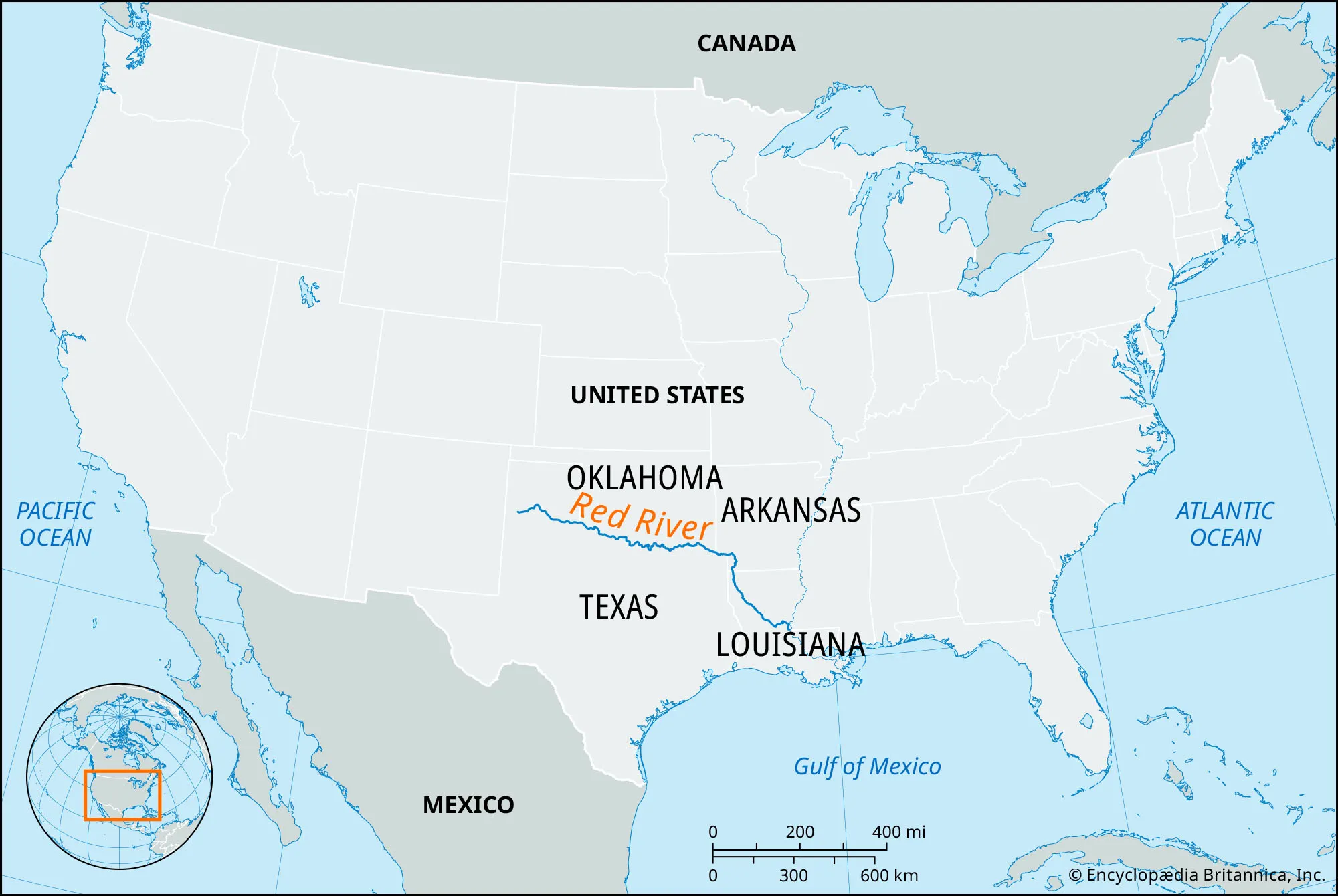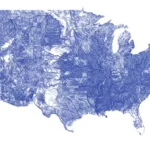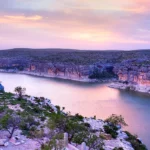Embark on a journey through the heart of America’s waterways as we explore the top 10 states with the most rivers. From the icy expanse of Alaska to the sun-drenched plains of Texas, rivers shape not only the landscapes but also the economies and ecosystems of these diverse states. Get ready to discover the incredible power and beauty of these natural wonders and learn why they are crucial to our nation’s identity.
Top 10 States with the Most Rivers
The United States, with its intricate network of over 250,000 rivers, is a testament to the vital role these waterways play in shaping the nation’s landscape and identity. But which states boast the highest concentration of these liquid arteries? Let’s dive in and explore the top 10 contenders:
- Alaska: As the Last Frontier, it likely comes as no surprise that Alaska reigns supreme with an estimated 12,000 named rivers. These waterways, covering a remarkable 14% of the state’s landmass, are a testament to its glacial history and vast wilderness.
- Texas: Living up to its reputation for grandeur, Texas secures the second spot with over 3,700 rivers. This abundance can be attributed to the state’s diverse geography and significant rainfall, contributing to a rich tapestry of aquatic ecosystems.
- Montana: Aptly nicknamed Big Sky Country, Montana boasts over 3,400 rivers threading through its majestic landscapes. The state’s mountainous terrain and annual spring snowmelt significantly contribute to this abundance, nourishing both its farmlands and renowned trout populations.
- California: From its iconic coastline to the towering Sierra Nevada, California’s diverse geography supports over 3,000 rivers. These waterways, including the mighty Sacramento and San Joaquin, are essential to the state’s agriculture and ecosystem.
- Oregon: Known for its towering forests and rugged coastline, the Beaver State is home to over 2,700 rivers, including the iconic Columbia River. These rivers play a crucial role in shaping Oregon’s landscape and supporting its diverse ecosystems.
- Washington: Characterized by dramatic landscapes, Washington state boasts over 2,400 rivers, fueled by the Cascade and Olympic mountain ranges. These rivers are not only vital to the lifecycle of its iconic salmon populations but also provide endless recreational opportunities.
- Idaho: Interlaced with over 2,300 rivers, Idaho’s natural beauty earns it the nickname the Gem State. Fed by the snowmelt of the Rocky Mountains and the Snake River Basin, these rivers sustain Idaho’s ecosystems and agricultural heartland.
- Colorado: Defined by the Rocky Mountains and vast plateaus, Colorado boasts over 2,200 rivers. Shaped by these geological wonders, these waterways offer thrill-seekers world-class whitewater rafting and anglers unparalleled fishing opportunities.
- Wyoming: Synonymous with wide-open spaces, Wyoming is home to over 2,100 rivers. Influenced largely by the Rocky Mountains and Yellowstone National Park, these pristine waterways offer sanctuary to abundant wildlife.
- Pennsylvania: Rounding out the top 10 is Pennsylvania, boasting over 2,000 rivers. Shaped by the Appalachian Mountains and the Delaware River Basin, these rivers are crucial to the state’s fishing industry and provide picturesque landscapes for recreation.
If you are interested in the top 10 states with the most rivers, you should know about the three longest rivers in the United States and all about the longest river in Oregon.
Which State Reigns Supreme – Unveiling the State with the Most Rivers
Having ventured across the diverse landscapes of the United States, it’s time to unveil the state with the most rivers. While several states boast impressive numbers, one state stands out.
Alaska: A Land of Rivers
Alaska, renowned for its untouched wilderness and towering mountains, claims the title of the state with the most rivers. With over 3,190 named rivers, Alaska’s waterways are essential to its ecosystem and identity. The Yukon River, the third longest river in North America, is a testament to the scale and significance of Alaska’s river systems.
Missouri: Where the Mighty Mississippi Begins
While Alaska may have the most rivers, Missouri holds a special place in the heart of America’s waterways as the birthplace of the legendary Mississippi River. This mighty river, originating in Minnesota, embarks on a 2,340-mile journey south, ultimately emptying into the Gulf of Mexico. The Mississippi River, fed by countless smaller rivers and streams, serves as a vital artery for both wildlife and commerce.
Could There Be More?
Determining the exact number of rivers in a state is more complex than it seems. Different organizations employ varying methods for defining and counting rivers, leading to fluctuations in reported figures. Some experts suggest that with advancements in mapping and survey techniques, we may uncover even more hidden waterways, adding to the mystery and wonder of these natural systems.
Beyond the Numbers – Ecological Significance of Rivers in These States
Rivers are more than picturesque landscapes; they are the lifeblood of the environment, supporting a complex web of life and regulating the delicate balance of ecosystems.
Biodiversity Hotspots
Rivers provide diverse habitats, from shallow banks to deep channels, each hosting a unique array of species. Fish, amphibians, reptiles, insects, and birds all rely on rivers for sustenance and shelter, making them biodiversity hotspots.
Water Regulators
Rivers act as natural flood control systems, absorbing excess rainfall and releasing it gradually, preventing catastrophic flooding in surrounding areas. This natural buffering capacity is crucial for maintaining the stability of ecosystems and protecting human settlements.
Nutrient Cycling and Water Purification
Rivers act as both nutrient highways and natural filtration systems. They transport essential nutrients, like nitrogen and phosphorus, that support plant and animal life. As water flows downstream, it undergoes natural filtration processes, removing pollutants and improving water quality.
Human Impacts and Conservation
Human activities, such as pollution, dam construction, and habitat destruction, pose significant threats to river ecosystems. Pollution contaminates water sources, impacting aquatic life and human health. Dams, while sometimes necessary for water management, can disrupt natural river flow, impacting fish migration and sediment transport. Habitat destruction, often driven by urbanization and agriculture, removes vital riparian zones that protect riverbanks and provide crucial habitat.
Conservation efforts, including pollution reduction strategies, habitat restoration projects, and sustainable dam management practices, are crucial for protecting these vital resources. Public awareness and community involvement are also essential for fostering a sense of stewardship and responsibility for these natural treasures.
Navigating the Waterways: Exploring the Economic Impact of Abundant Rivers
Rivers are not only ecological marvels but also economic powerhouses. They fuel industries, facilitate transportation, and provide livelihoods for millions of people.
River Economic Belts (REBs)
The concept of River Economic Belts (REBs) highlights the economic significance of these waterways. REBs are geographic areas where rivers drive economic activity due to their role in transportation, irrigation, and resource provision. They support industries such as agriculture, fishing, tourism, and hydropower generation.
Challenges and Sustainable Practices
Despite their economic importance, REBs face growing challenges. Pollution from industrial discharge, agricultural runoff, and urban development degrades water quality and ecosystem health. Climate change exacerbates these challenges, leading to more extreme weather events, such as droughts and floods, which disrupt economic activity and threaten livelihoods.
Sustainable practices are crucial for ensuring the long-term health and productivity of REBs. This includes implementing stricter pollution control measures, promoting sustainable agricultural practices, and investing in climate change adaptation strategies.
Community Engagement and Technological Innovation
Local communities are key stakeholders in river management and conservation efforts. Engaging communities in decision-making processes, empowering them with knowledge, and fostering a sense of ownership over their local waterways can lead to more sustainable and equitable outcomes.
Technological advancements offer promising solutions for monitoring river health, managing water resources, and mitigating pollution. For example, remote sensing technologies can track water quality parameters and identify pollution sources, while innovative water treatment technologies can help remove contaminants and improve water quality.
Looking Ahead: A Call for Collaboration and Continued Research
As we navigate the future of our waterways, it’s crucial to recognize that rivers are interconnected systems, often transcending political boundaries. Collaboration among states, federal agencies, and local communities is essential for effective river management and conservation. Continued research is also paramount to deepen our understanding of these complex ecosystems and to develop innovative solutions for the challenges they face. By working together and embracing a holistic approach to river management, we can ensure the health and vitality of these precious resources for generations to come.

















Comments are closed.